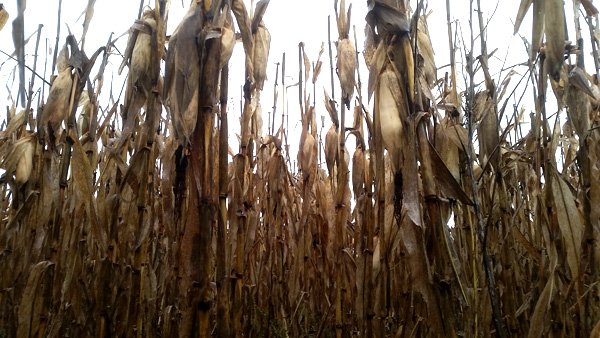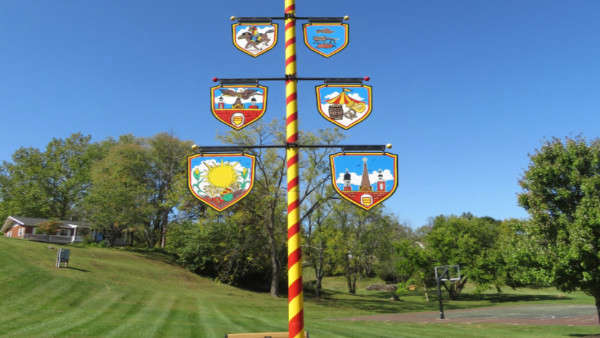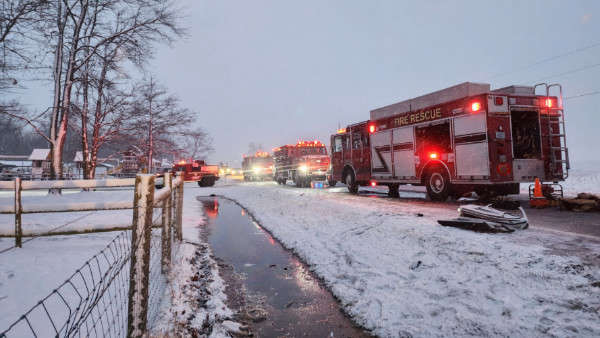The agriculture educator at the Purdue University Extension Office in Dearborn County shares thoughts on the local harvest.

A corn field waits for harvesting in Moores Hill, Indiana. Photo by Mike Perleberg, Eagle Country 99.3.
(Dearborn County, Ind.) - The fall harvest in southeastern Indiana is lagging slightly behind the rest of the state, and Thursday’s deluge of rain is not going to help.
The U.S. Department of Agriculture’s weekly crop update released Monday says about 80 percent of soybean crops statewide have been harvested. About 77 percent of corn is in the barn.
However, only about two-thirds of corn and soybean crops in our corner of the state are harvested. So says John Hawley, the extension educator for agriculture, natural resources and community development at the Purdue University Extension Office in Dearborn County.
“Around here we really didn’t see many people putting stuff into their bins until about the end of September, so we are about two weeks behind,” said Hawley.
“But that’s normal. We were hot in the summer. We had a lot of replants this year with the (February/March) flood. That’s kind of how it goes.”
Hawley adds that some southeastern Indiana farmers may be working well into December to get their crops completely harvested. The effort has been a bit slower here, he explains, because the ground has been wet and compacted.
Just because local farmers will be behind their counterparts in other parts of Indiana, doesn’t mean they won’t enjoy high yields. Hawley says Indiana should see a record harvest this year, even with less farmland being available each year due to development and other factors.
“The growing hours make a really big difference,” says Hawley. “We had all that rain in the spring and late winter. Aurora was flooded out. Dillsboro was flooded out in some spots and so was Lawrenceburg. However, we dried up quite a bit during the summer and had a lot of sunshine. That really helps the crops out there.”
Market prices, however, will keep Hoosiers farmers from getting too giddy about the abundance produced by their crops. The USDA says Indiana corn fetched $3.45 a bushel in September while soybeans brought $8.75 per bushel – both close to the national average. Hawley says the prices may be as low as half of what they were in 2012.
Southeastern Indiana’s signature crop, Hawley believes, is hay.
“Hay is really our big thing around here. When it comes to corn and soybeans, especially because of our topography, we’re just so hilly that it just doesn’t make sense to go out and grow a bunch of corn and soybeans because it is just too steep. Hay does better on that kind of land and hay does better in general on our soil,” he explains.
Alfalfa hay went for $175 per ton in September, according to the USDA. Other types of hay were bringing $120 per ton.
Hawley says specialty farms and orchards in the area had some success this year, despite pest and disease problems.
RELATED STORIES:
Reports Detail Future Impacts Of Climate Change In Indiana
Corn, Soybean Crops In Southern Indiana Slower Than Other Regions, But No Reason To Panic

 The Christ Hospital Heart and Vascular Group to Relocate
The Christ Hospital Heart and Vascular Group to Relocate
 Applications Available for Change Ripley County Grant
Applications Available for Change Ripley County Grant
 DCF Awards $100K to Help Patients at St. Elizabeth Dearborn Cancer Center
DCF Awards $100K to Help Patients at St. Elizabeth Dearborn Cancer Center
 Crowdfunding Campaign Would Transform Oldenburg's Maypole Heritage Park
Crowdfunding Campaign Would Transform Oldenburg's Maypole Heritage Park
 UPDATE: Five Extricated, One Ejected in U.S. 421 Crash
UPDATE: Five Extricated, One Ejected in U.S. 421 Crash
 Grant Helps Education Center of Rising Sun Bridge Digital Gap
Grant Helps Education Center of Rising Sun Bridge Digital Gap













